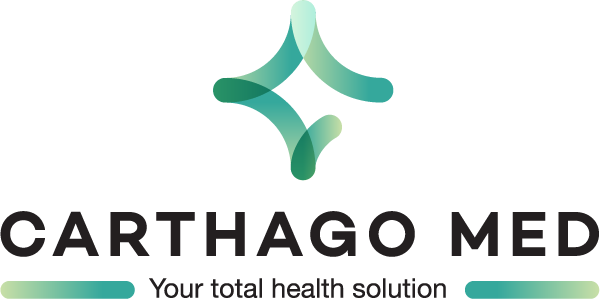
What are the results of a thigh lift?
Thigh lifting, or cruroplasty, is a cosmetic surgery that aims to tighten the skin located in the inner side of the thighs. This procedure aims to refine the thighs and make them more aesthetic. Discover the indications of thigh lift and its recommendations.
Why consider a thigh lift?
It can happen that the skin of the thighs becomes loose with big excess skin. This phenomenon usually occurs as a result of significant weight loss, due to old age or as a result of poor hygiene, after losing weight or with aging. This gives thighs and the entire silhouette a non-aesthetic appearance. In some cases, liposuction (aspiration of excess fat) may be sufficient to restore a better look to thighs, especially if the skin in this area has good elasticity characteristics. But if this is not the case, then a thigh lift will be necessary in order to give the thighs a more tonic appearance.
What are the results of a thigh lift?
Thigh lift procedures offer a comprehensive array of results that significantly impact both the physical appearance and the emotional well-being of individuals. Firstly, a key outcome is the attainment of a sculpted and defined thigh contour. Through the removal of excess skin and potential underlying fat deposits, the procedure shapes the thighs into a more streamlined and aesthetically pleasing form. Another primary goal is the elimination of excess skin, particularly relevant for those who have undergone weight loss or are dealing with the effects of aging. The surgery effectively addresses concerns of sagging skin, resulting in a smoother and tighter appearance. Furthermore, the procedure contributes to improved skin elasticity by repositioning and tightening the remaining skin, allowing it to better conform to the newly sculpted contours.
The thigh lift aims for enhanced proportions, creating a harmonious balance between the thighs and the overall physique. This reshaping and contouring contribute to an improved balance that complements the individual's body. While not the primary focus, the reduction in the appearance of cellulite is an additional benefit. The smoothing effect on the skin, coupled with the removal of excess fat in some cases, leads to a more even skin texture. Crucially, thigh lift results are designed to be long-lasting. The removal of excess skin and the restructuring of tissues result in enduring changes in the thighs' appearance. However, maintaining these results requires a commitment to a healthy lifestyle, including a balanced diet and regular exercise.
The versatility of thigh lift procedures allows for a tailored approach to address individual concerns. Whether opting for an inner thigh lift, outer thigh lift, vertical thigh lift, or a mini thigh lift, the chosen technique influences the specific results achieved. Skilled plastic surgeons strive for a natural-looking outcome that enhances the thighs' beauty without creating an artificial or overly tight appearance. Beyond physical changes, a successful thigh lift often leads to a significant boost in confidence and an improved body image. Feeling comfortable in one's body and enjoying the aesthetic improvements can have a positive impact on overall well-being, highlighting the holistic benefits of thigh lift procedures. You can feel the lift result almost immediately, but it will take about 6 months before you can appreciate the final aspect of the thighs.
What are some recommendations for healing?
Embarking on the journey of a thigh lift surgery not only brings the promise of enhanced aesthetics but also requires meticulous post-operative care to ensure a smooth recovery. To optimize your recuperation, it is crucial to follow detailed healing recommendations. After the thigh lift procedure, strict adherence to the post-operative care guidelines provided by your plastic surgeon is essential. This includes following instructions on wound care, prescribed medications, and the proper use of compression garments. Clear and open communication with your healthcare provider is crucial during this phase. Prioritize rest in the initial days and weeks after surgery to allow your body ample time to heal. Avoid strenuous activities, including heavy lifting and vigorous exercise, as recommended by your surgeon. Gradually reintroduce activities based on your surgeon's guidance. Since thigh lift surgery involves incisions, proper scar care is essential. Follow your surgeon's advice on cleaning and caring for the incision sites. Regularly apply recommended scar creams or ointments to promote optimal healing and minimize scar visibility over time.
Wear compression garments as instructed by your surgeon to reduce swelling and provide support to the treated areas. Consistent use, especially during the initial stages of healing, contributes to better outcomes. Stay well-hydrated and maintain a balanced diet rich in nutrients. Adequate hydration supports the healing process, and proper nutrition provides essential building blocks for tissue repair. Consult with your healthcare provider for personalized dietary recommendations. Manage post-operative discomfort with prescribed pain medications as directed by your surgeon. Communicate openly about your pain levels to ensure you receive the appropriate medications and dosage adjustments if needed. Attend all scheduled follow-up appointments with your plastic surgeon to allow for a thorough assessment of your healing progress. Your surgeon can address any concerns, monitor for complications, and provide additional guidance on your recovery journey.
Gradually reintroduce normal activities based on your surgeon's recommendations, starting with light exercises and progressively increasing activity levels to support the recovery process without compromising results. Recognize the emotional aspects of recovery, as it is normal to experience a range of emotions post-surgery. Maintain open communication with your support system and seek professional help if needed. Healing takes time, so be patient with your body's natural recovery process and prioritize self-care. Allow yourself the time and space needed to fully recover and enjoy the long-term benefits of the thigh lift procedure. By following these comprehensive healing recommendations, you set the stage for a successful thigh lift recovery, ultimately achieving the desired results in both comfort and aesthetic transformation.
What Activities are Recommended and Restricted After the Procedure?
During the first few days after the operation, you may experience some difficulty walking, but it will still be a highly recommended activity as it helps reduce the appearance of blood clots (phlebitis). In all cases, even if you are not walking enough, treatment will be prescribed to reduce this risk. However, avoid doing a serious sports activity during the recovery period. Sport resumption will only be possible 4 weeks after procedure. It is has to be progressive during the first sessions.









